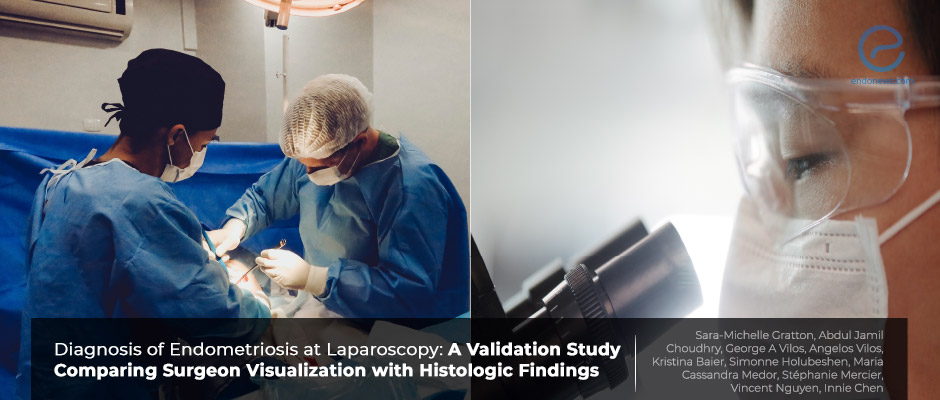Endometriosis: Beyond the naked eye visibility
Mar 8, 2022
Bare eye vision is not enough for endometriosis diagnosis until histopathologicallylogically confirmed
Key Points
Highlights:
- The study confirmed that even experienced endometriosis surgeons can misdiagnose endometriosis by relying on bare eye vision. Histopathologic confirmation of lesions is vital.
Importance:
- The question is, whether the improved laparoscopy devices and experience on endometriosis would replace histopathology diagnosis.
What's done here:
- The charts of patients operated on in a tertiary endometriosis center in Canada have been retrospectively evaluated.
- The charts of 96 patients that include definitive explanations of endometriosis lesions, ASRM classification, and histopathologic confirmation were evaluated.
- The demographic data, the surgeon’s prediction about deep infiltrative endometriosis or superficial lesions depending on visualization, and tactile cues were also noted.
Key Results:
- Among 96 patients included, endometriosis was diagnosed in 79 (82.3%) by surgeons during laparoscopic image and in 71 (74.0%) confirmed by histopathology.
- Out of 71 women with a histopathologic diagnosis of endometriosis, only 64 had been detected by laparoscopic visualization.
- Among the 25 women whose pathology results were negative for endometriosis, only 10 were identified as not having endometriosis by laparoscopy.
- The positive predictive value was 81.0% and the negative predictive value was 58.8% for laparoscopy-only diagnosis.
- The sensitivity was 90.1% while the specificity was 40.0% for laparoscopic visualization over histopathologic diagnosis.
Limitations:
- The retrospective nature and the low number of cases limits the study's reliability.
- The possibility of ablation of lesions instead of excision might have affected the results.
Lay Summary
The gold standard method for endometriosis diagnosis is histopathologic evaluation of the resected lesions.
The study conducted by Sara-Michelle Gratton et al. in Canada evaluated the possible effect of developed laparoscopic skills and equipment on the endometriosis diagnosis, and whether it is possible to replace the histopathologic diagnosis. The charts of the patients who had operation in a tertiary endometriosis center in Canada.
The charts of 96 patients with definitive explanations of endometriosis lesions, ASRM classification, and histopathologic confirmation have been included for evaluation. Also, the demographic data, the surgeon’s prediction about deep infiltrative endometriosis or superficial lesions depending on visualization and tactile cues have also been noted to compare with histopathologic outcomes.
Among 96 patients, endometriosis was diagnosed in 79 (82.3%) by surgeons during laparoscopy, and in 71 (74.0%) confirmed by histopathology.
Out of 71 women with a histopathologic diagnosis of endometriosis, only 64 had been detected by laparoscopic visualization.
Among the 25 women whose pathology results were negative for endometriosis, only 10 were identified as not having endometriosis by laparoscopy.
The positive predictive value was 81.0% and the negative predictive value was calculated as 58.8% for laparoscopy-only diagnosis. The sensitivity was 90.1% while the specificity was 40.0% for laparoscopic visualization over histopathologic diagnosis.
The authors concluded that visualization diagnosis is still way beyond histopathological diagnosis. The details and full text of this interesting study can be found in the September 2021 issue of the "Journal of Obstetrics and Gynaecology Canada".
Research Source: https://pubmed.ncbi.nlm.nih.gov/34562632/
histopathology endometriosis diagnosis laparoscopy accuracy visibility

